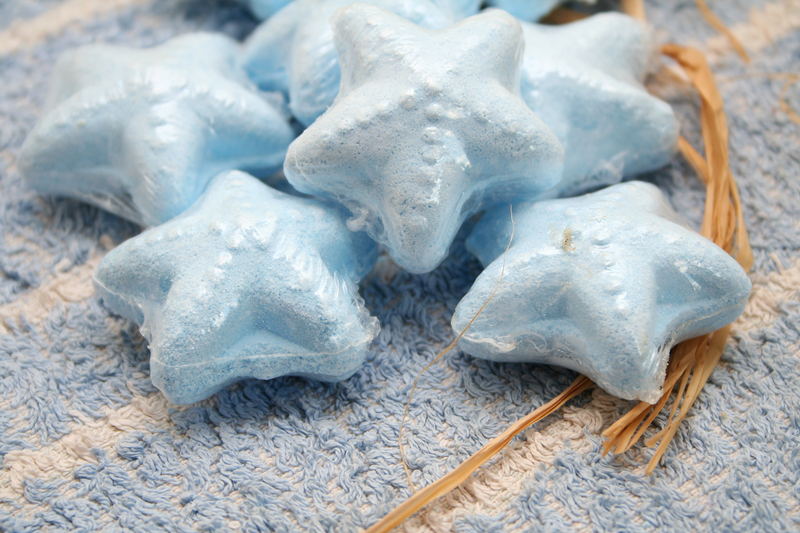Master the art of eliminating damp odors effortlessly
Posted on 27/08/2025
Master the Art of Eliminating Damp Odors Effortlessly
Nothing is quite as unpleasant as the musty, stale aroma that comes with damp spaces. Whether you're dealing with persistent moisture in your home, car, basement, or wardrobe, finding a solution that actually eliminates damp odors--and keeps them from coming back--often feels like a challenge. But don't worry! With the right knowledge and techniques, you can master the art of eliminating damp odors effortlessly. In this comprehensive guide, we'll explore causes, prevention tips, DIY hacks, and expert advice for banishing moisture and mustiness for good.
Understanding the Root Causes of Damp Smells
Before you can eliminate damp odors efficiently, it's essential to understand what leads to their development. Tackling the source brings lasting freshness and prevents recurring issues.
- Excess Moisture: The number one culprit behind damp smells is elevated humidity or moisture levels. When water collects in walls, floors, or fabrics, it's the perfect breeding ground for bacteria and mold.
- Poor Ventilation: Insufficient airflow allows stagnant air and trapped moisture to linger, causing odor problems in basements, bathrooms, laundry rooms, and wardrobes.
- Water Leaks: Undetected leaks in roofs, pipes, or windows can cause patches of persistent dampness that create a musty stench.
- Mold and Mildew: These fungi thrive in moist environments and release strong, unpleasant odors that settle into fabrics, carpets, and walls.
- Neglected Cleaning: Areas with accumulated dirt and dust collect moisture and amplify the risk of stagnant odors.
Identifying the underlying source is the first step in your journey toward effortlessly removing damp odors and keeping your space fresh and inviting.

The Consequences of Ignoring Damp Odors
Many people simply mask musty smells with air fresheners or fabric sprays. While this offers temporary relief, untreated dampness can lead to several problems, including:
- Mold growth: Prolonged moisture lets mold spores flourish, potentially damaging property and personal possessions.
- Health risks: Mold and mildew can aggravate allergies, asthma, and respiratory problems--especially in children and elderly adults.
- Damage to furnishings: Persistent dampness weakens wallpaper, wood, and upholstery fibers, resulting in costly repairs or replacements.
- Reduced property value: Homes with lingering damp smells are less desirable for buyers or renters, impacting your investment.
Mastering the art of eliminating damp odors effortlessly not only improves your living space but also protects your health and assets.
Essential Steps to Remove Damp Odors Effectively
1. Locating and Addressing the Source
- Inspect Problem Areas: Focus on places like basements, under sinks, near windows, or behind large furniture where moisture can hide. Pay attention to water stains, peeling paint, or damp patches.
- Fix Leaks and Blockages: Repair any visible leaks in pipes, roofs, or windows. Ensure gutters are unclogged to prevent water infiltration.
- Improve Drainage: Make sure the exterior ground slopes away from your building's foundation to minimize water seepage.
2. Increase Ventilation and Air Circulation
Stagnant air harbors and intensifies damp odors. Simple improvements can go a long way:
- Open windows and doors when possible, especially after showers, cooking, or laundry.
- Install exhaust fans in bathrooms and kitchens to remove moisture-laden air.
- Move furniture away from walls to allow air to circulate behind large pieces.
- Use ceiling or portable fans to keep air moving in musty rooms.
3. Dry Wet Areas Promptly
Whenever you notice spills or leaks, act fast to dry out the area:
- Use towels or mops to absorb standing water.
- Run a dehumidifier or air conditioner to lower humidity.
- Remove wet carpets, rugs, or fabrics and air them out in direct sunlight.
- For severe flooding, consider professional water extraction services.
Speed is essential in eliminating damp odors before they have time to develop or spread!
DIY Solutions for Effortless Odor Removal
Natural, household products can be highly effective when it comes to neutralizing damp smells. These solutions are safe, accessible, and typically budget-friendly.
Baking Soda: The Odor Absorber
- Sprinkle baking soda liberally onto carpets, upholstery, or mattress surfaces.
- Leave it for a few hours--preferably overnight--then vacuum thoroughly.
- Place open containers or sachets of baking soda in wardrobes, cupboards, or under sinks to trap moisture and odors.
White Vinegar: Nature's Deodorizer
- Fill a spray bottle with white vinegar and mist affected surfaces. Allow to air dry; the vinegar smell dissipates, taking musty odors along.
- Set small bowls of vinegar in closed spaces (closets, basements) for 12-24 hours to absorb excess humidity and odor.
Activated Charcoal: The Ultimate Moisture Magnet
- Place activated charcoal pouches in musty wardrobes, drawers, or shoes to soak up both moisture and unpleasant scents.
- Replace or recharge charcoal bags every month for ongoing effectiveness.
Lemon Juice & Essential Oils: For a Fresh Scent
- Add a cup of lemon juice to your laundry or cleaning water for naturally fresh, deodorized fabrics.
- Mist diluted essential oils (such as tea tree, eucalyptus, or lavender) throughout your home for a clean-smelling finish after cleaning.
These staples make eliminating damp odors easy and chemical-free. Incorporate them into your regular cleaning routine for ongoing freshness.
Professional-Grade Products and Equipment
Sometimes, dampness proves too stubborn for basic DIY methods. For those situations, consider these commercial solutions for effortless damp odor elimination:
- Dehumidifiers: Essential for basements or naturally humid areas, dehumidifiers pull excess moisture from the air, halting the progression of mold and musty smells.
- Air Purifiers with HEPA Filters: These devices trap airborne mold spores and odor particles, improving both air quality and scent.
- Mold Removal Sprays: Target and destroy mold at its source. Choose non-toxic or plant-based options if you have pets or children.
- Odor Neutralizing Gels or Beads: These products continuously absorb unwanted smells and help keep closets, bathrooms, and cupboards fresh.
- Professional Carpet & Upholstery Cleaning: Deep cleaning removes embedded moisture, bacteria, and musty residue from soft furnishings.
Regular use of these technologies makes the fight against damp scents almost effortless.
Proactive Prevention: Keeping Damp Odors Away for Good
1. Control Humidity Levels
- Keep your home's relative humidity between 30% and 50% using dehumidifiers or air conditioners.
- In bathrooms, run the extractor fan during and after showers.
- Dry clothes outdoors or in a vented room, never in closed spaces.
2. Encourage Airflow
- Open windows daily--even a few minutes helps prevent indoor air from becoming stale.
- Regularly rotate and air out stored linens, clothes, and upholstered items.
3. Maintain Your Plumbing and Roofing
- Inspect for and repair leaks swiftly.
- Seal gaps around windows, doors, and vents to block rainwater.
- Check gutters and downspouts, ensuring water flows away from your foundations.
4. Regular Cleaning and Maintenance
- Dust and vacuum at least weekly to prevent dust buildup.
- Wipe down walls, skirting boards, and hard-to-reach corners where condensation may form.
- Launder curtains, slipcovers, and bedding regularly to prevent mustiness.
5. Design Considerations for Damp-Prone Spaces
- Opt for moisture-resistant paint and materials in bathrooms, kitchens, and basements.
- Use area rugs instead of wall-to-wall carpeting in lower levels for easier cleaning.
- Install vapor barriers behind drywall in basements if moisture is an ongoing problem.
By combining preventive measures and quick responses, you'll practically eliminate the risk of recurring damp odors.
Special Tips for Problem Areas
Certain areas and materials are more prone to odor buildup. Here's how to handle them with ease:
Basements
- Install a dehumidifier with an automatic drain function for constant protection.
- Seal all cracks in walls and floors with waterproofing compounds.
- Avoid storing cardboard boxes directly on the floor; use plastic bins instead.
Wardrobes/Closets
- Use moisture absorbers like silica gel packs or hanging dehumidifier sachets.
- Ensure clothes are completely dry before putting them away.
- Air out closets regularly and avoid overfilling so air can circulate.
Bathrooms
- Wipe down wet surfaces after bathing or showering.
- Keep shower curtains open after use to encourage drying.
- Use mildew-resistant caulking in wet areas.
Myths Vs. Facts About Eliminating Damp Smells
-
Myth: Air fresheners can permanently solve odor problems.
Fact: While they may temporarily mask musty smells, only addressing the source provides lasting results. -
Myth: Opening a window alone is enough.
Fact: Increased airflow helps, but it may not eliminate the root cause if leaks or moisture buildup persist. -
Myth: You need harsh chemicals to remove odors.
Fact: Many natural products like baking soda, vinegar, and lemons are highly effective and safe.

When to Seek Professional Help
While most damp odors can be eliminated effortlessly with the steps above, there are times when expert intervention is necessary. Seek help if:
- You spot extensive mold growth (more than 10 square feet).
- Dampness keeps returning despite repeated cleaning.
- You notice water stains spreading or structural damage in walls or floors.
- Household members experience unexplained health symptoms such as persistent coughing, headaches, or allergies.
A professional mold remediation or water damage specialist is equipped to identify hidden problems, perform safe removal, and restore normal conditions, ensuring that eliminating damp odors is truly effortless and lasting.
Conclusion: Breathe Deep, Live Fresh
Mastering the art of eliminating damp odors effortlessly is much more than a quick clean-up job--it's about adopting proactive habits, making smart home improvements, and staying alert to hidden moisture sources. Whether you choose DIY tricks, advanced appliances, or periodic professional help, the result is a healthier, more comfortable environment free from persistent musty odors.
- Identify and address the source of moisture or leaks as your first step.
- Maintain good airflow and humidity control for ongoing freshness.
- Regularly clean and inspect those hidden, damp-prone corners.
- Choose natural deodorizers and effective odor removal products to neutralize any lingering scents safely.
Say goodbye to mustiness -- and hello to fresh, pure indoor air that you'll love to breathe. By following these comprehensive strategies, you can eliminate damp odors effortlessly and enjoy a sweet-smelling, welcoming home or workplace every day.





